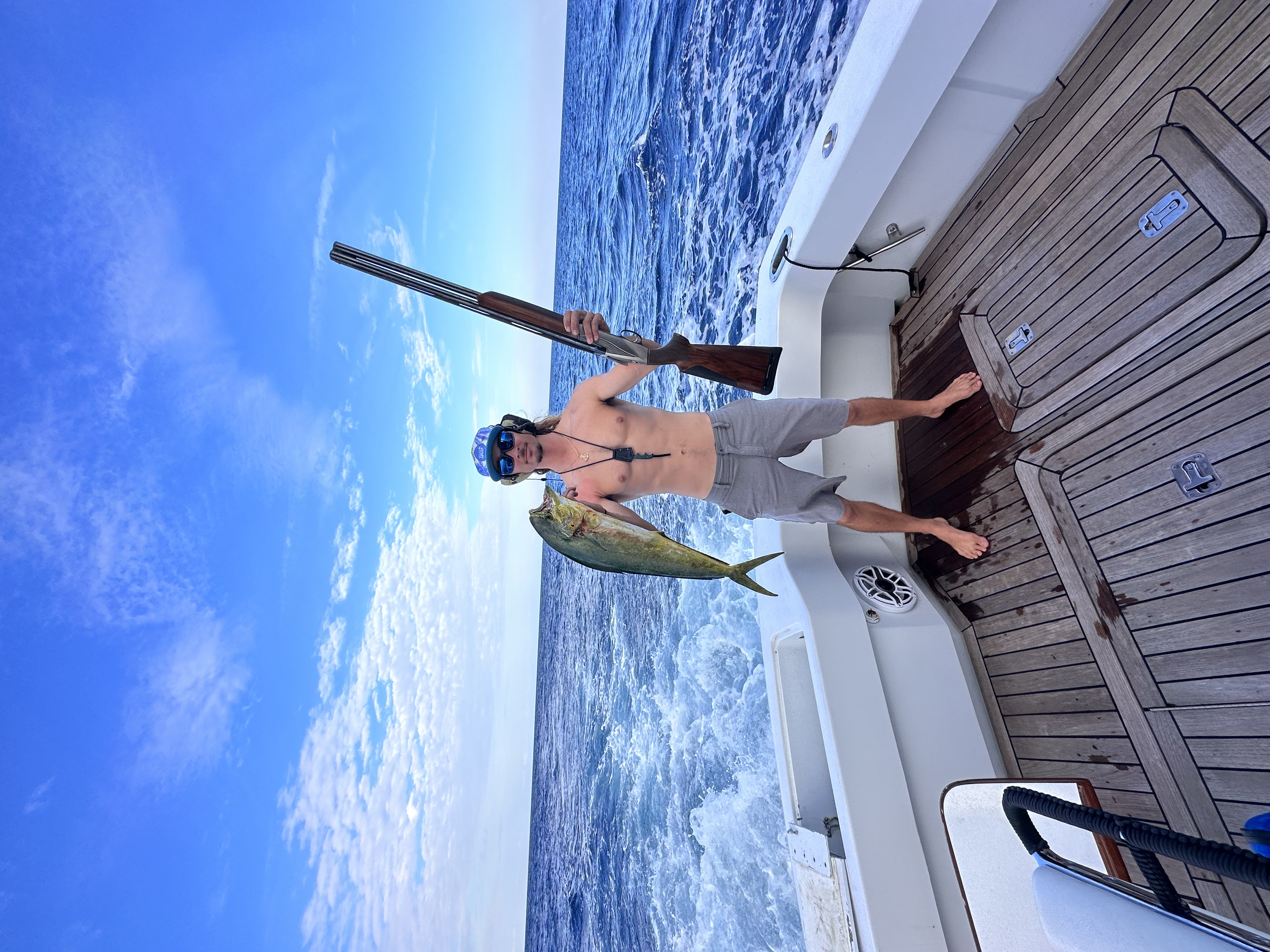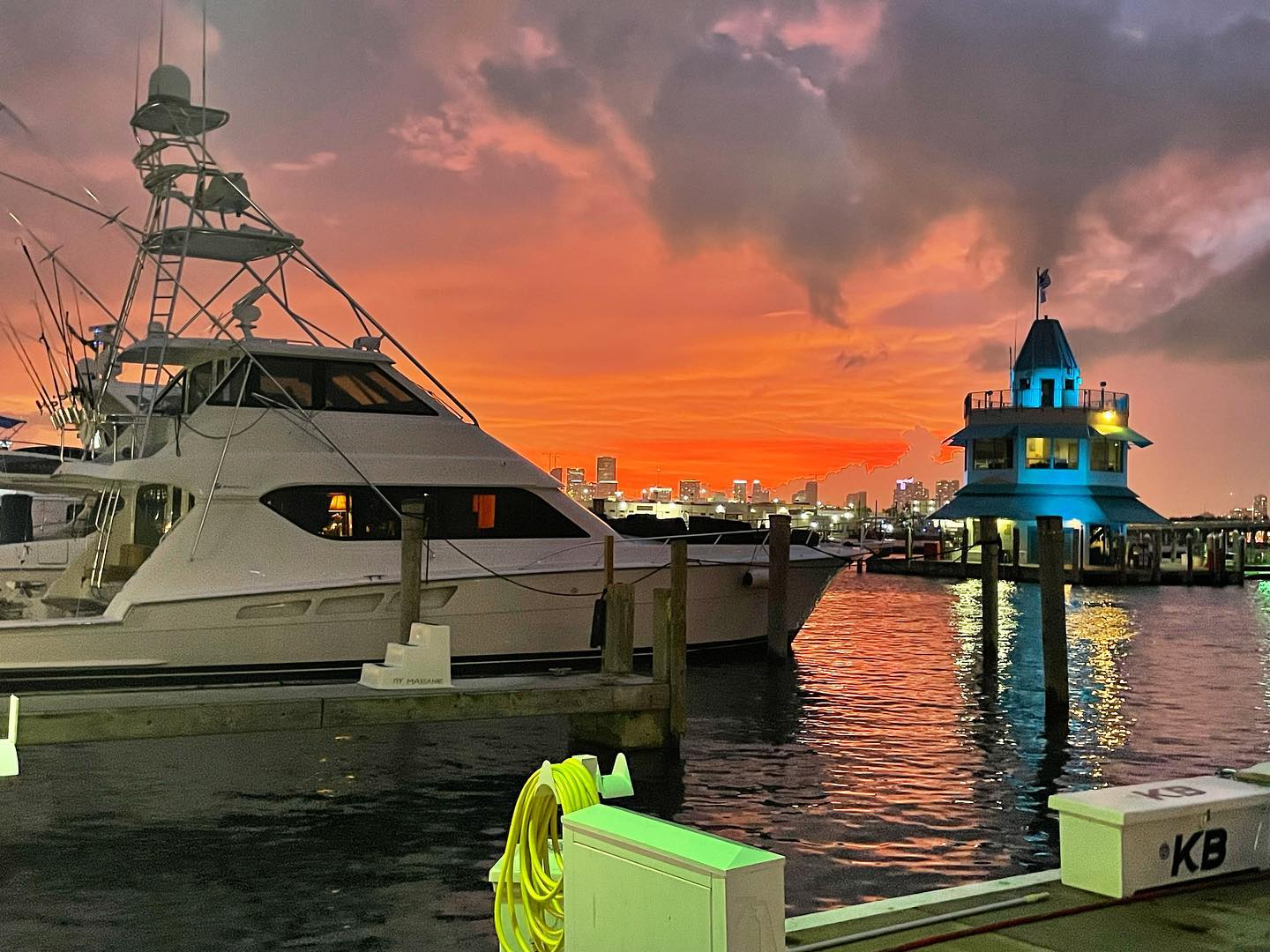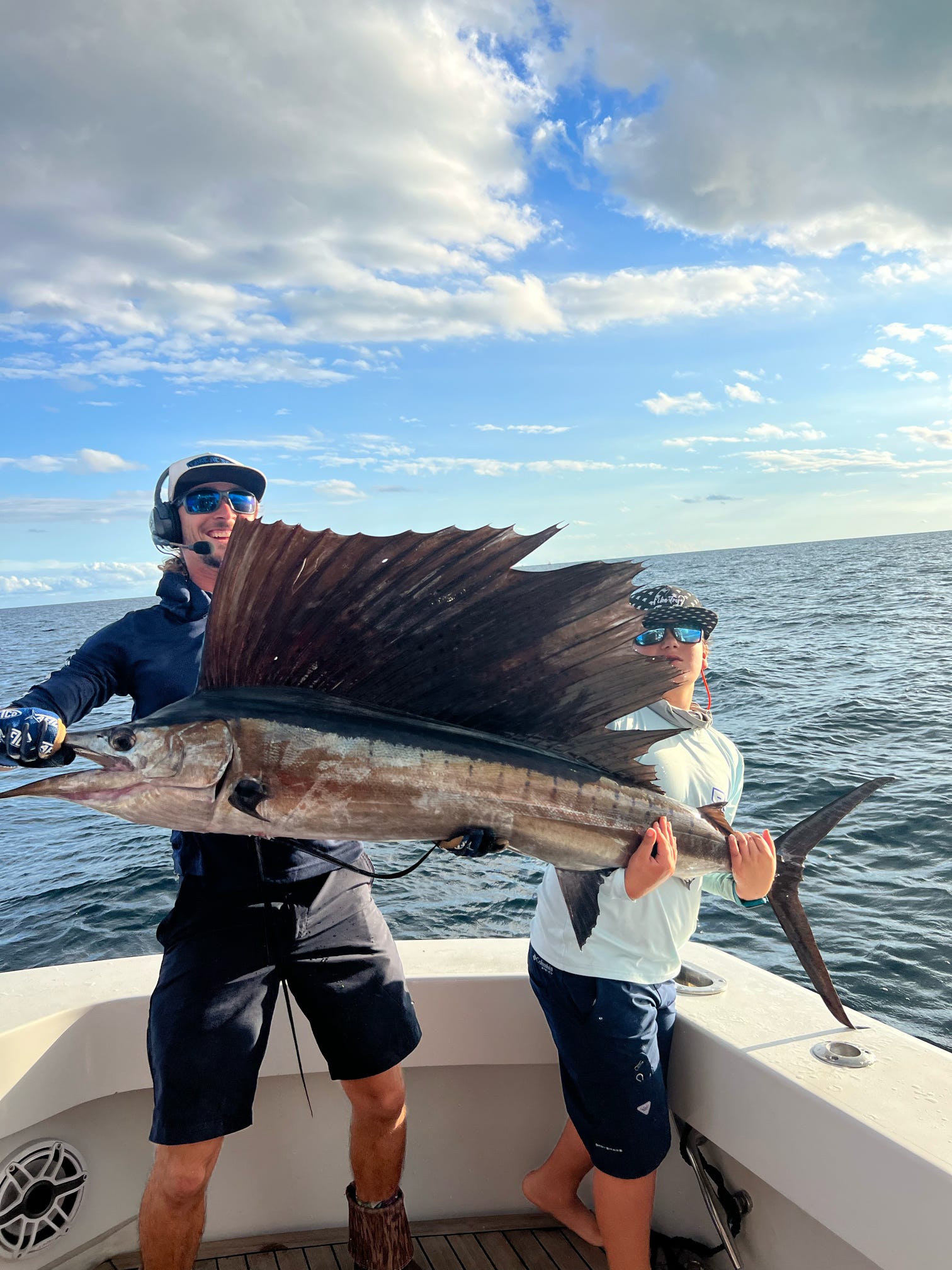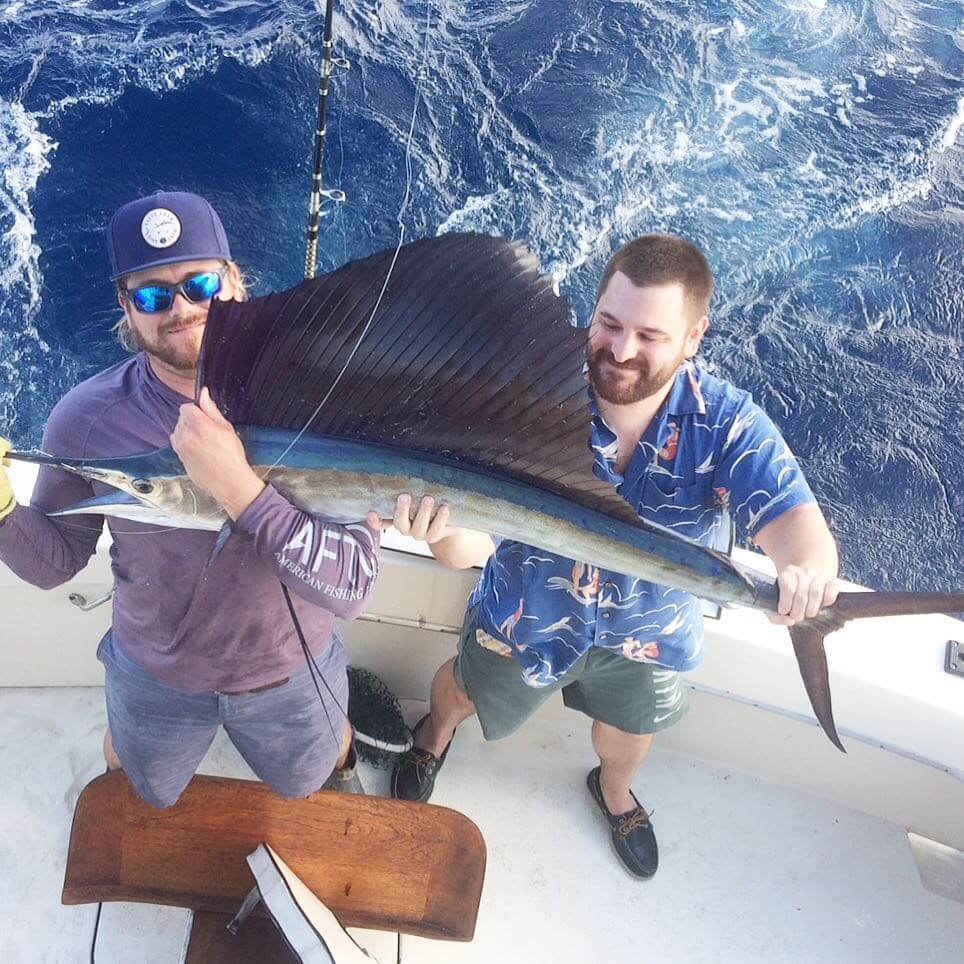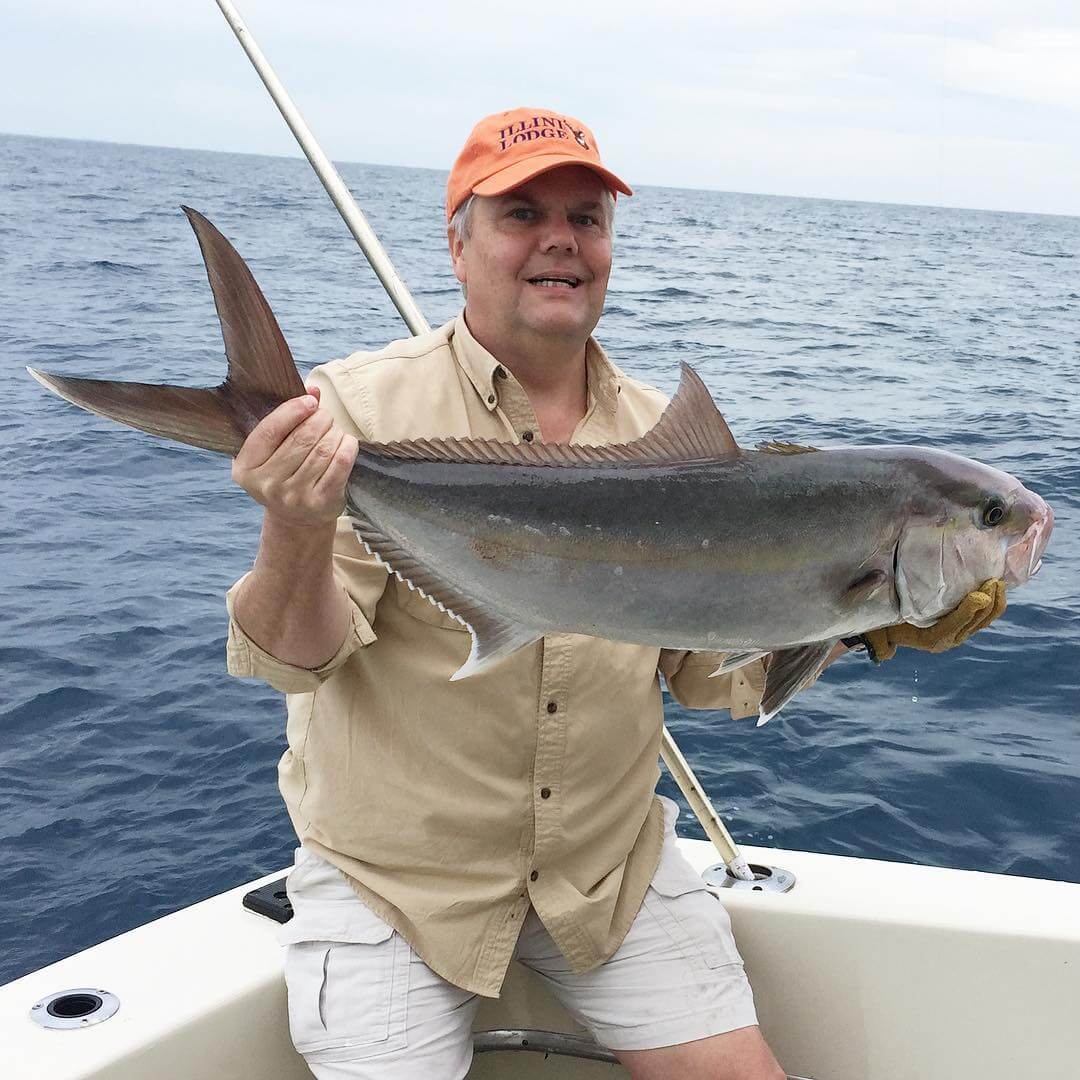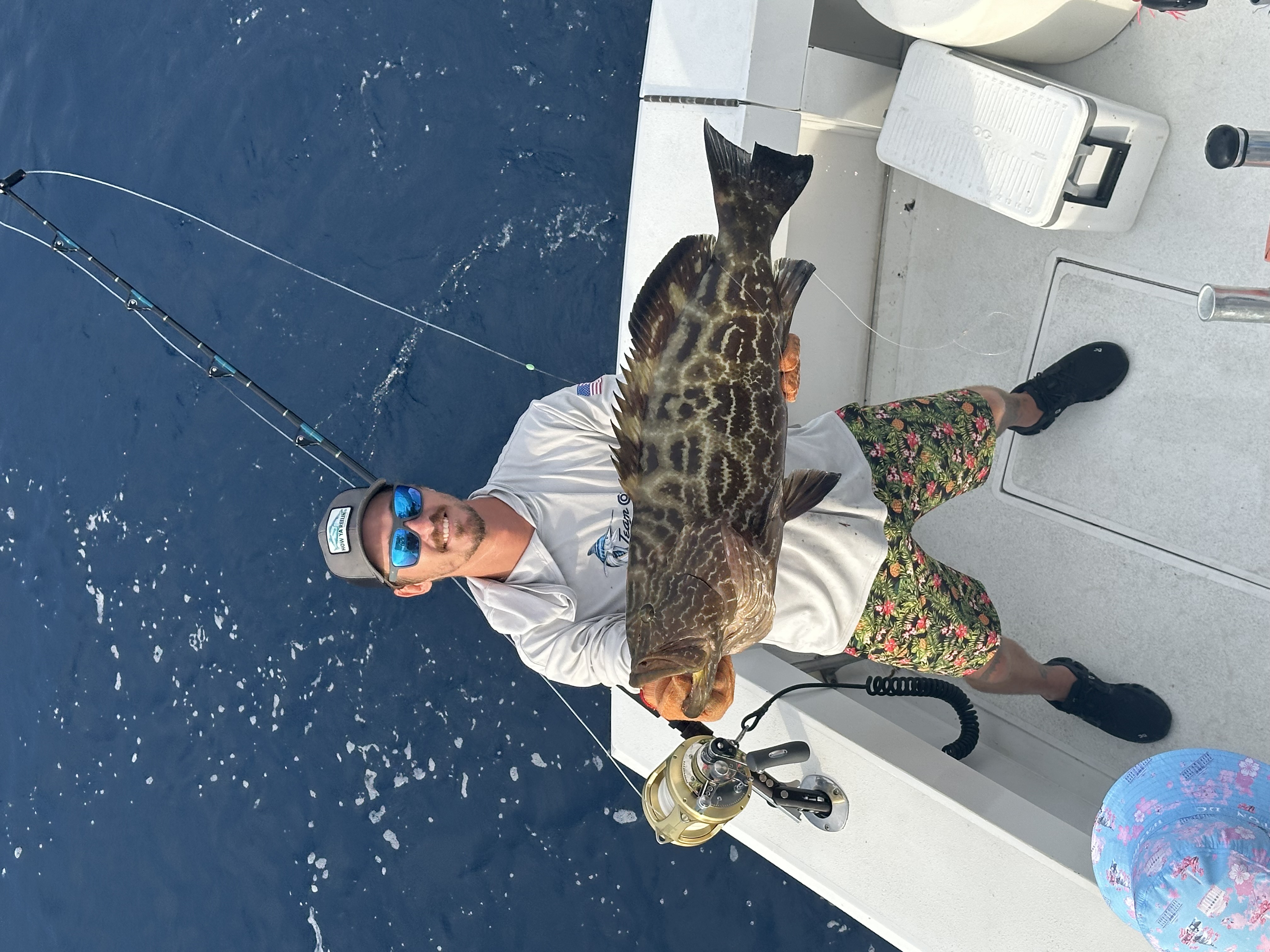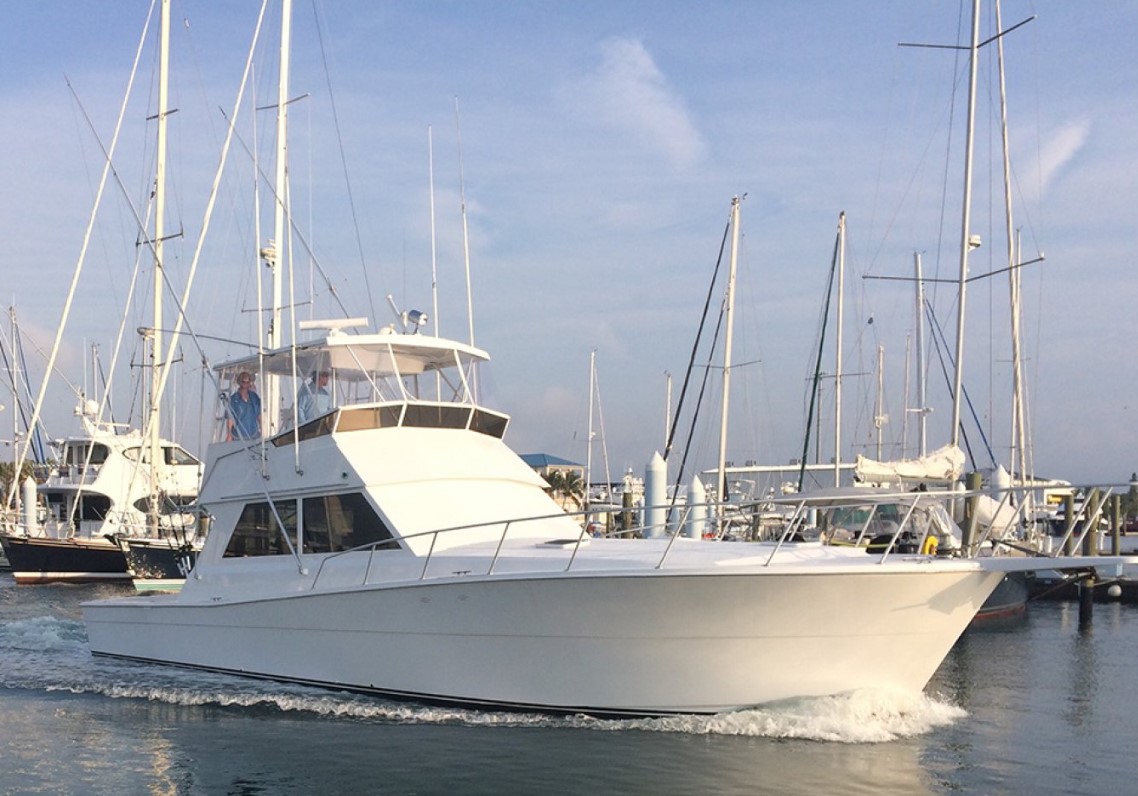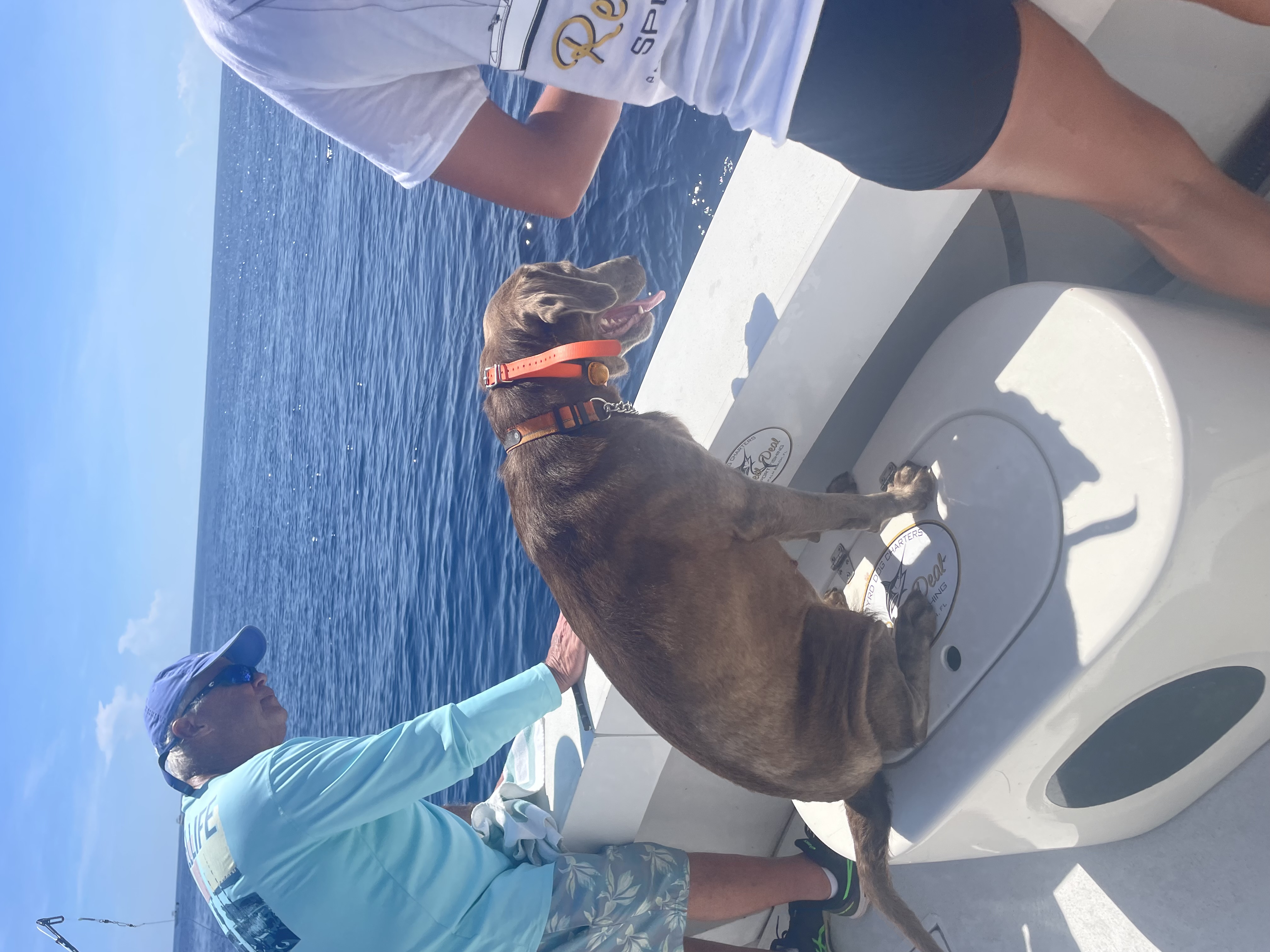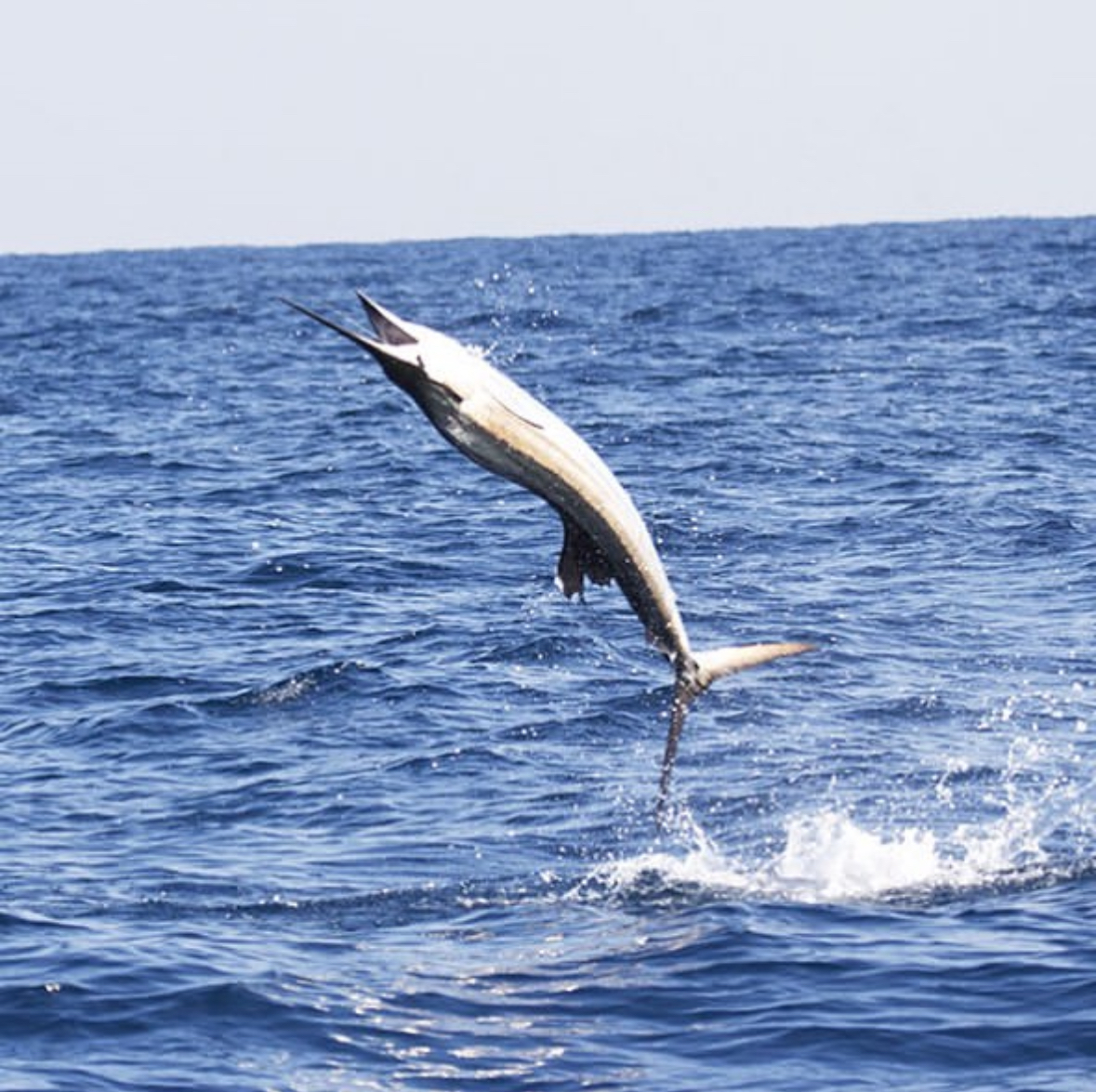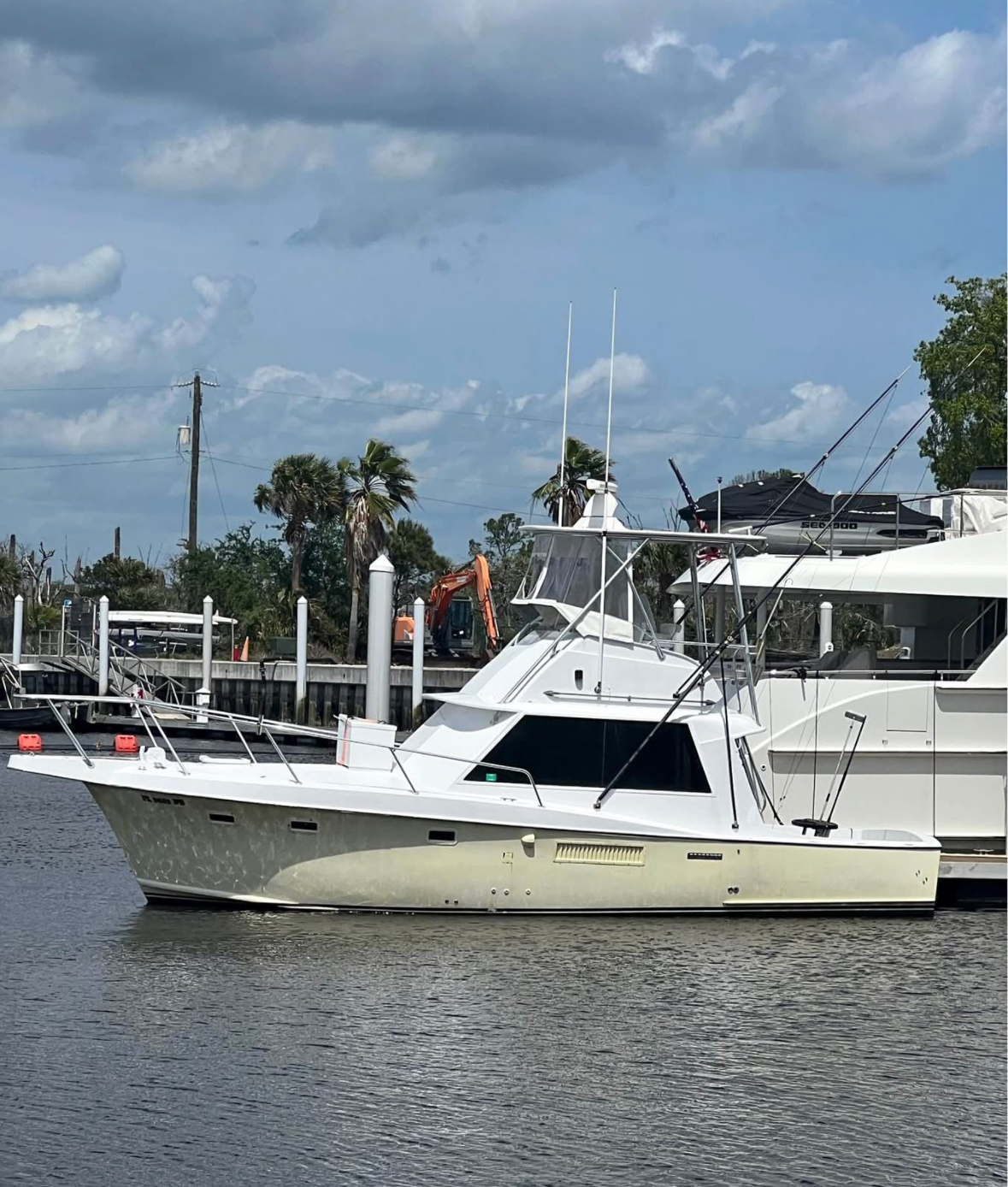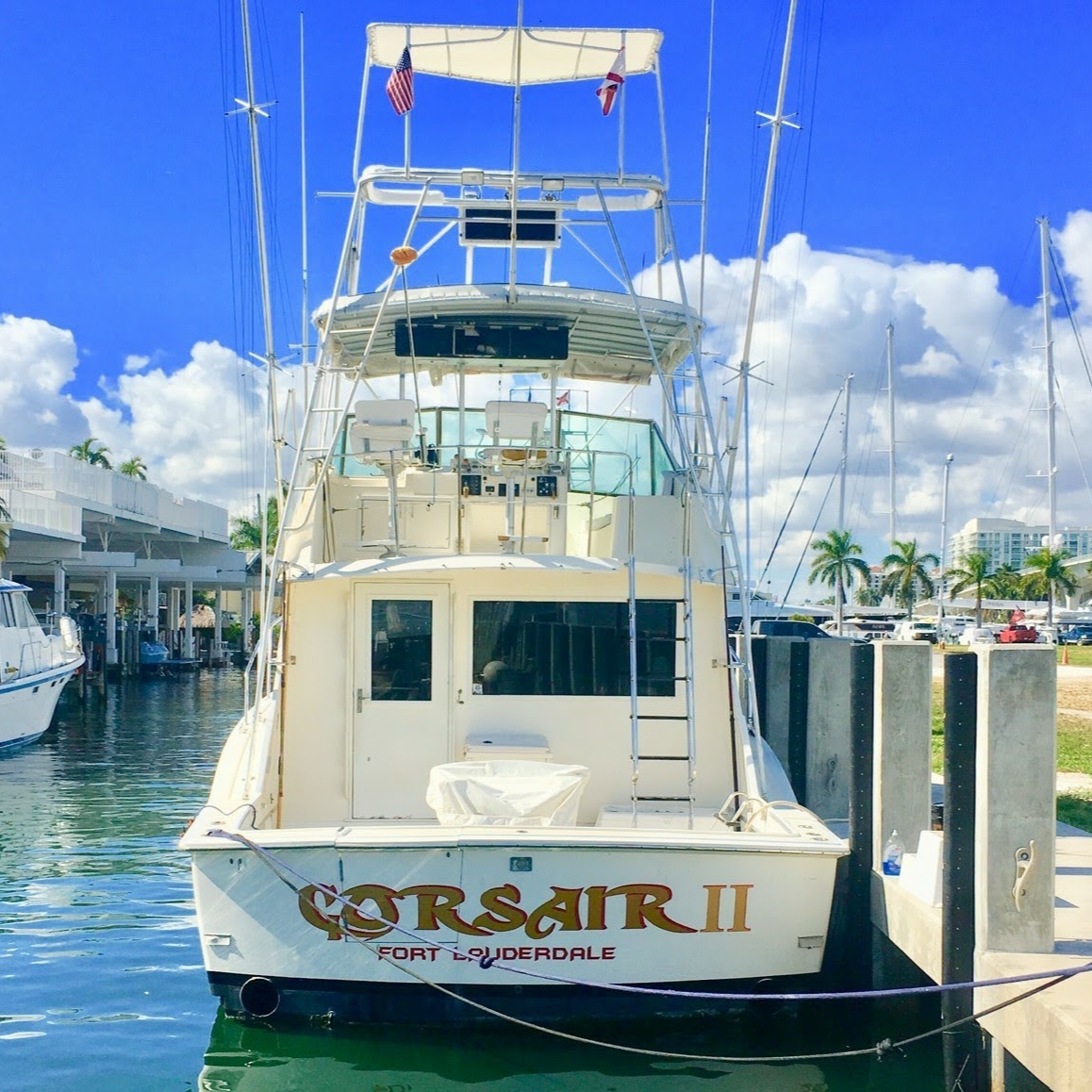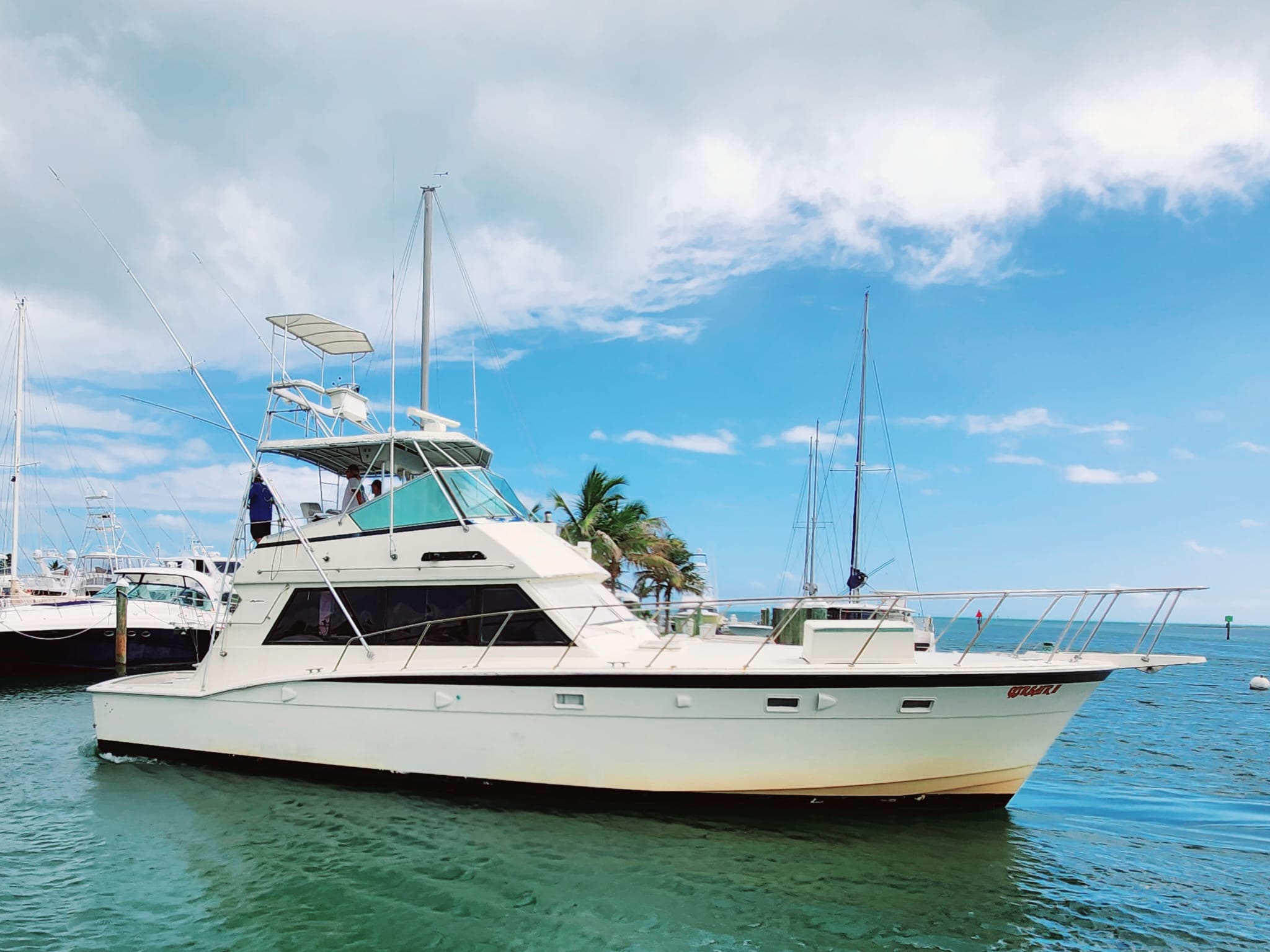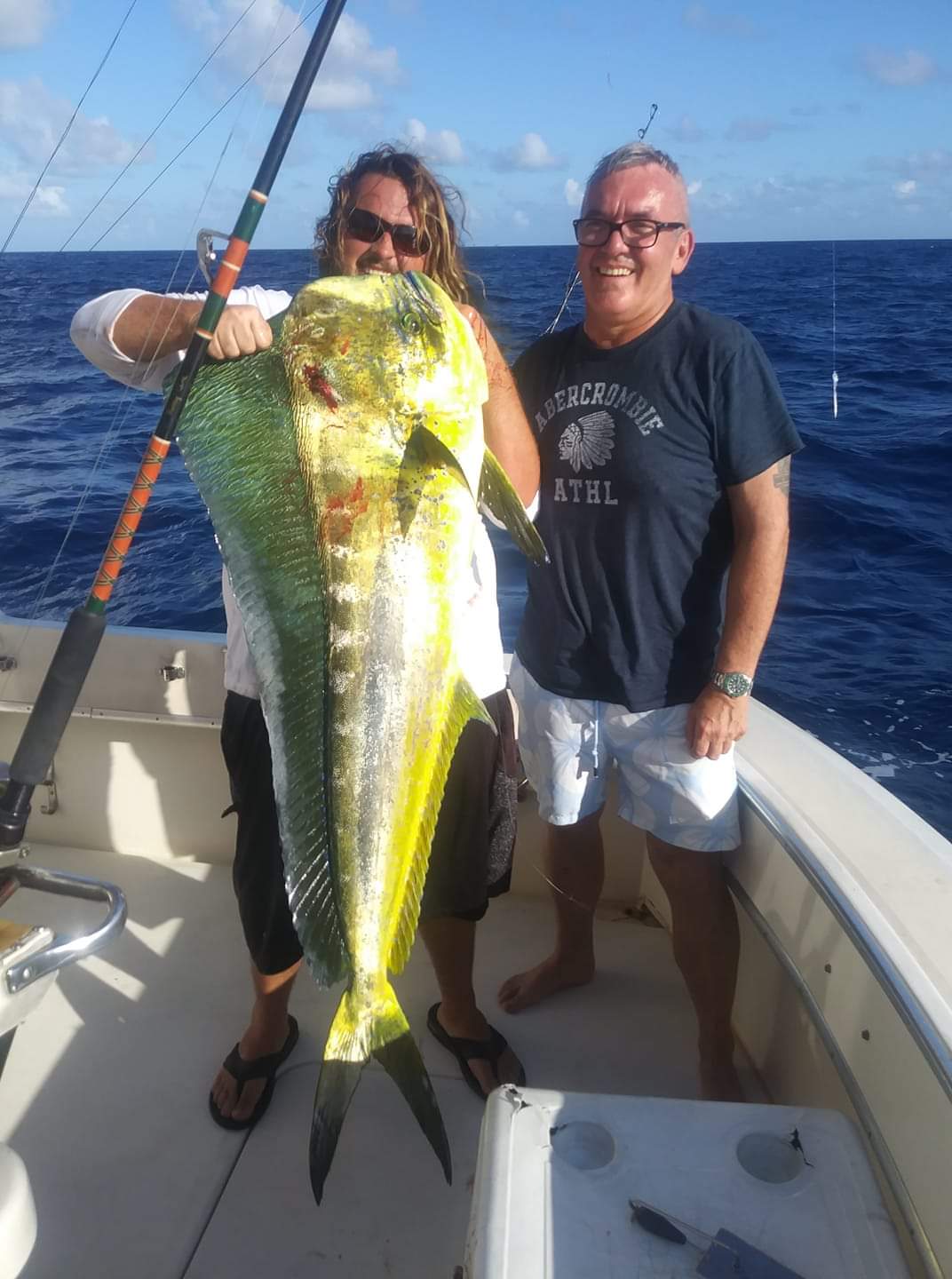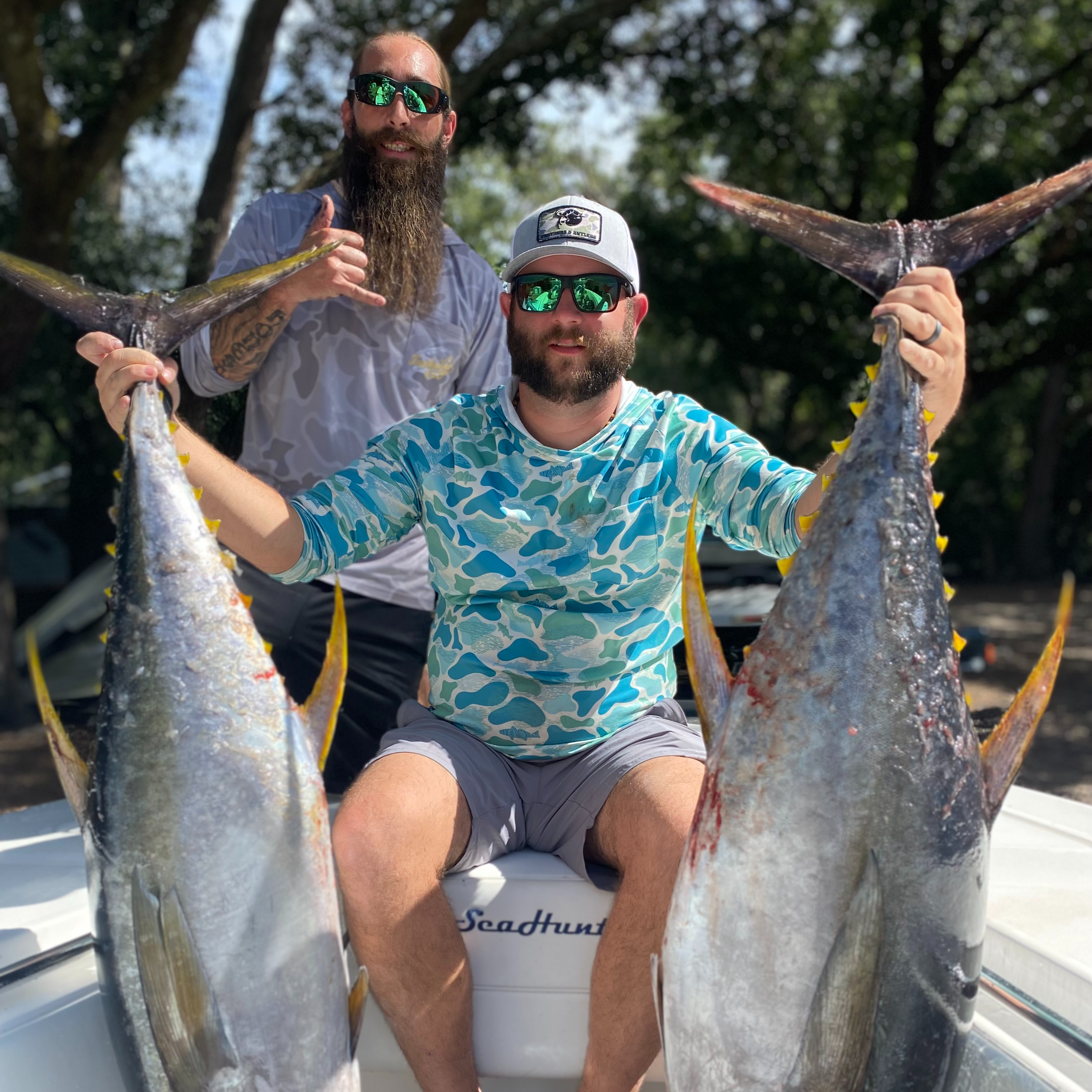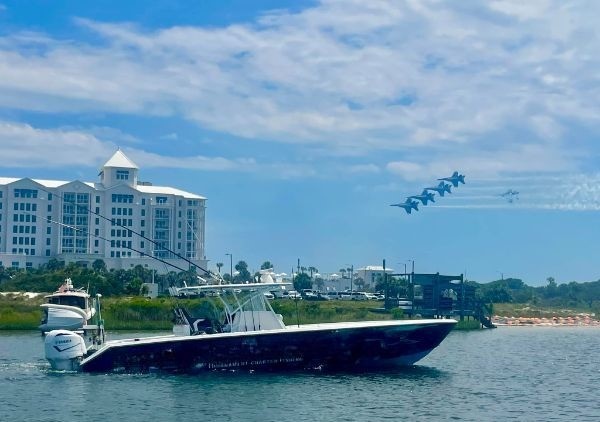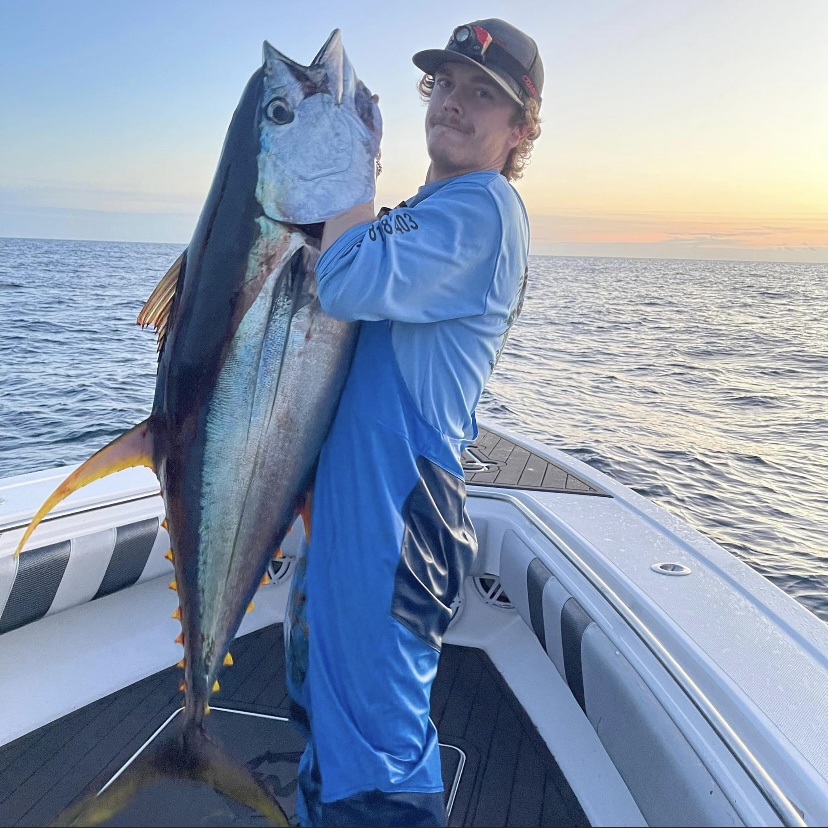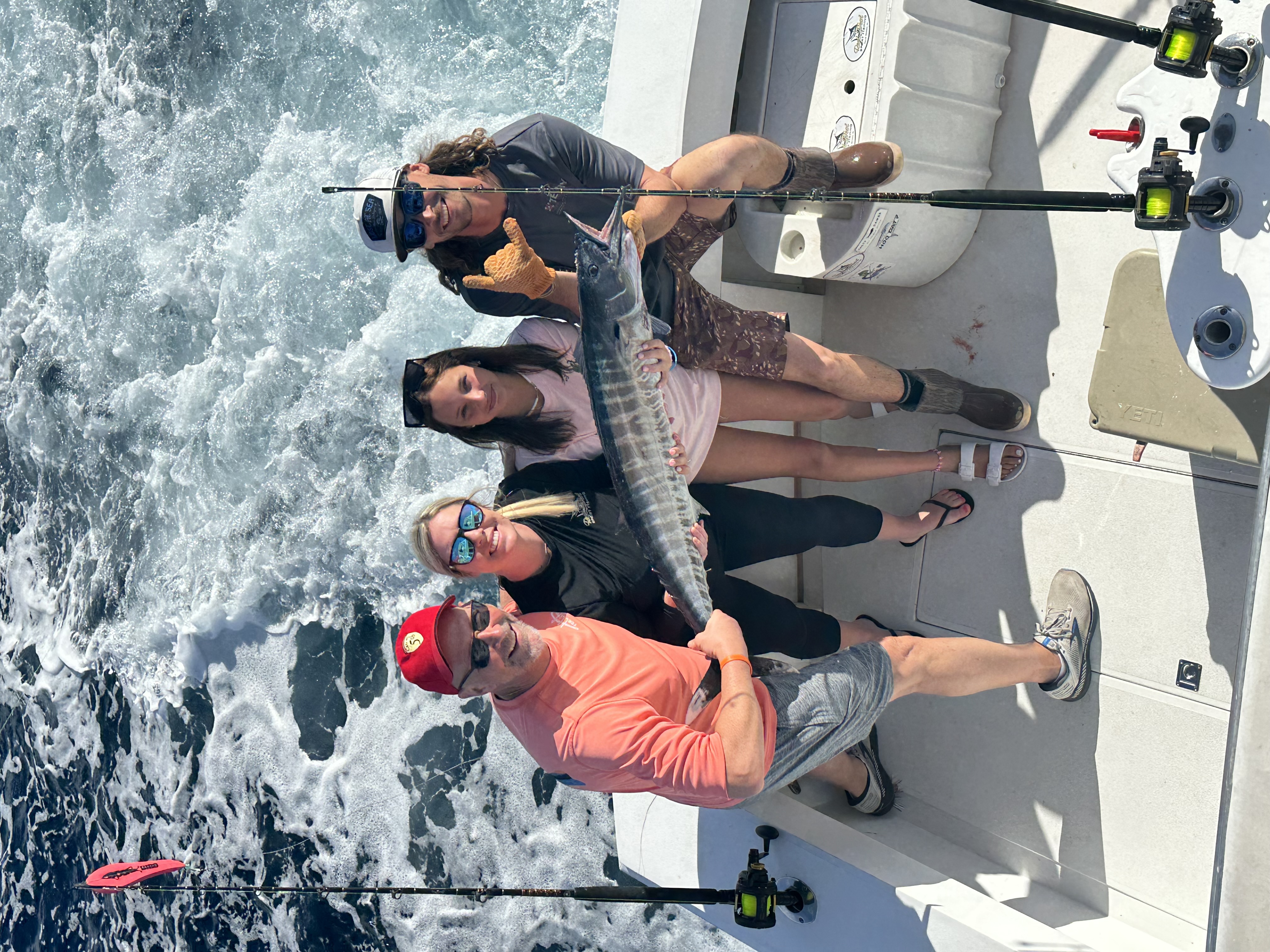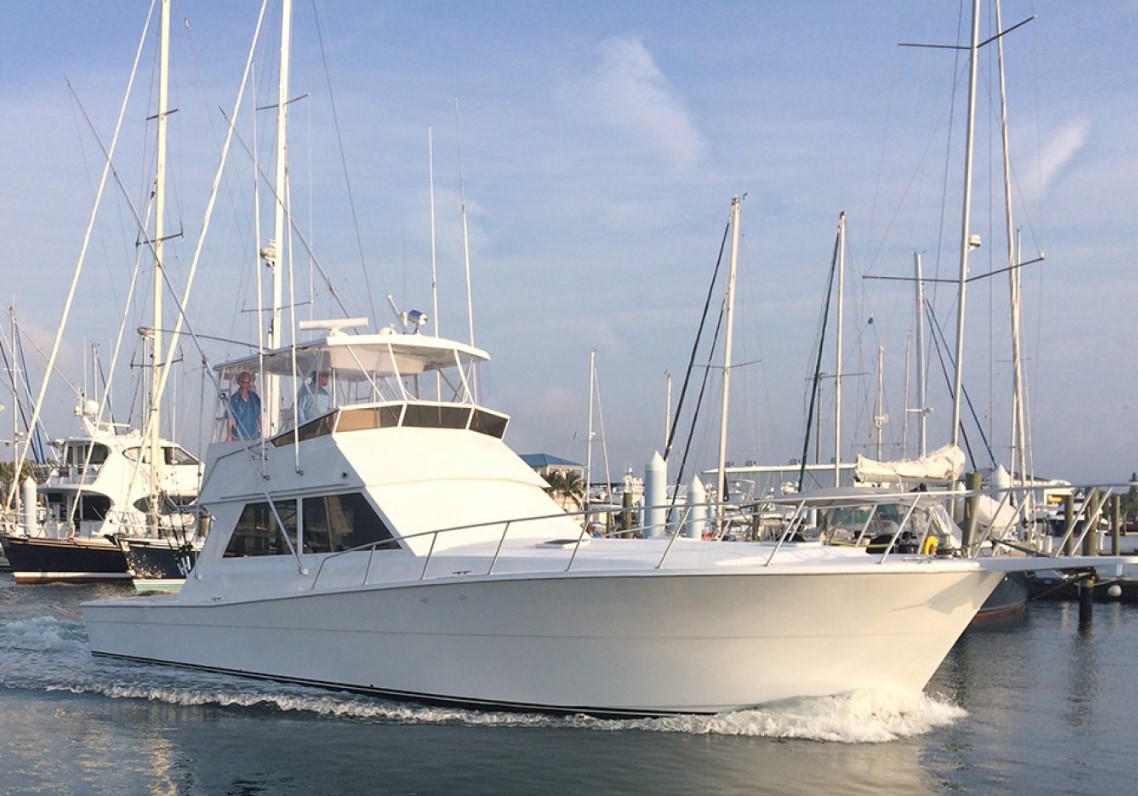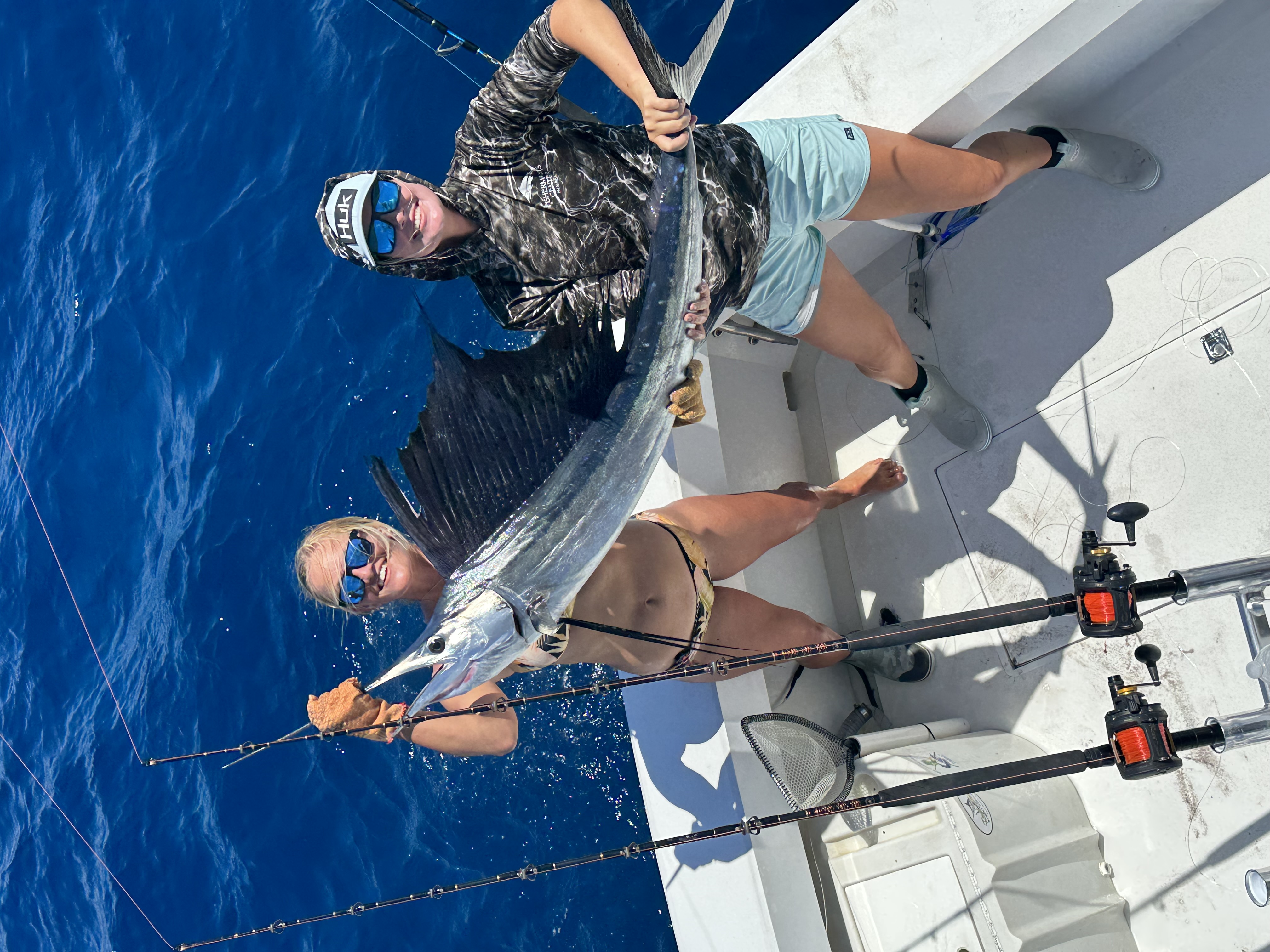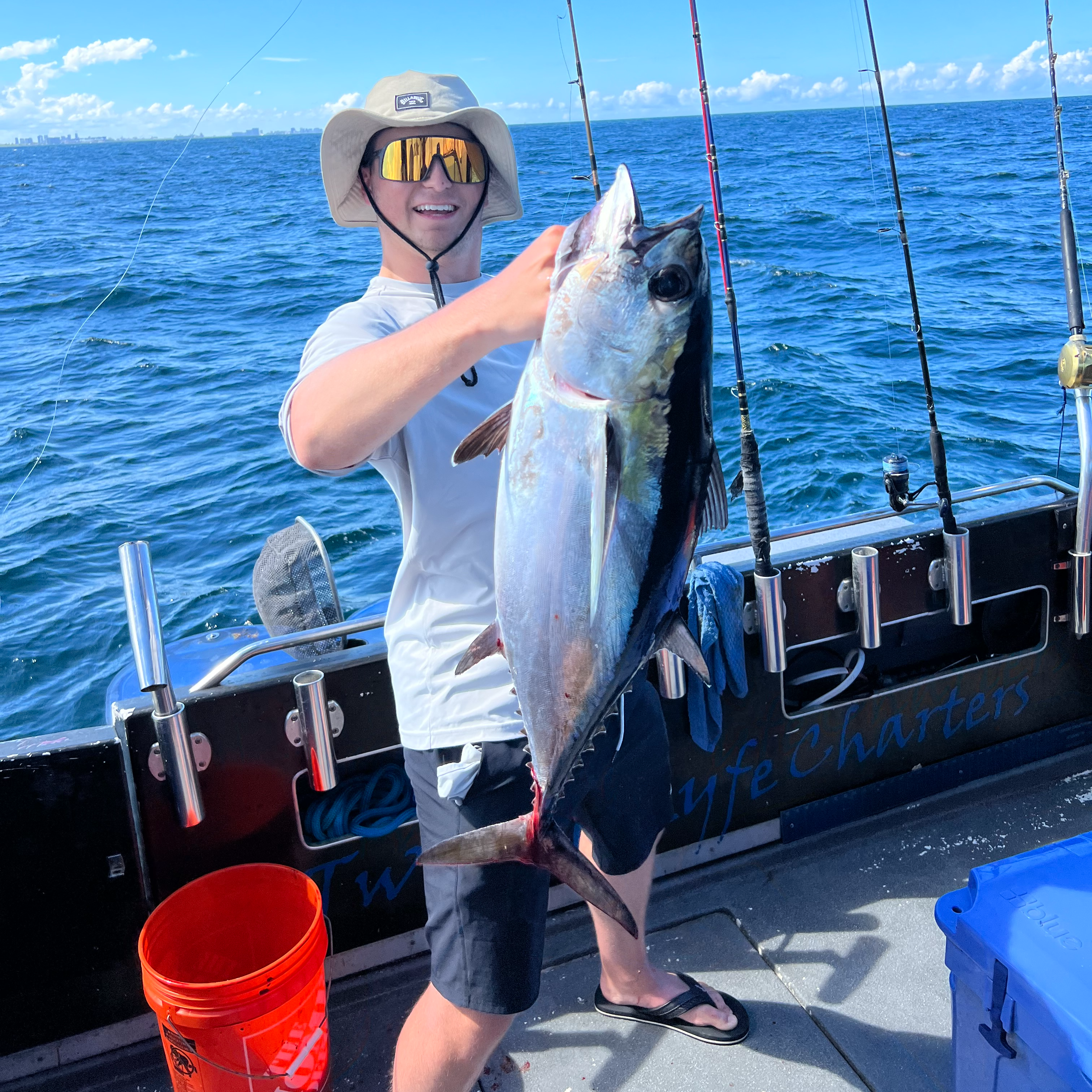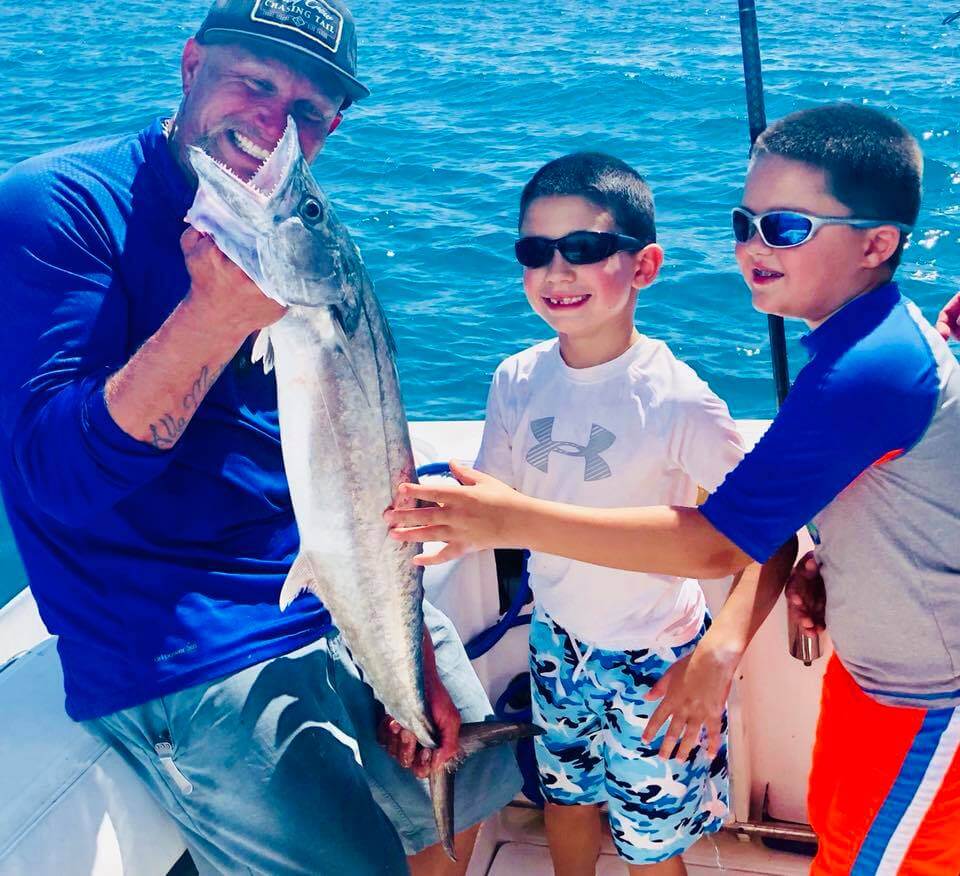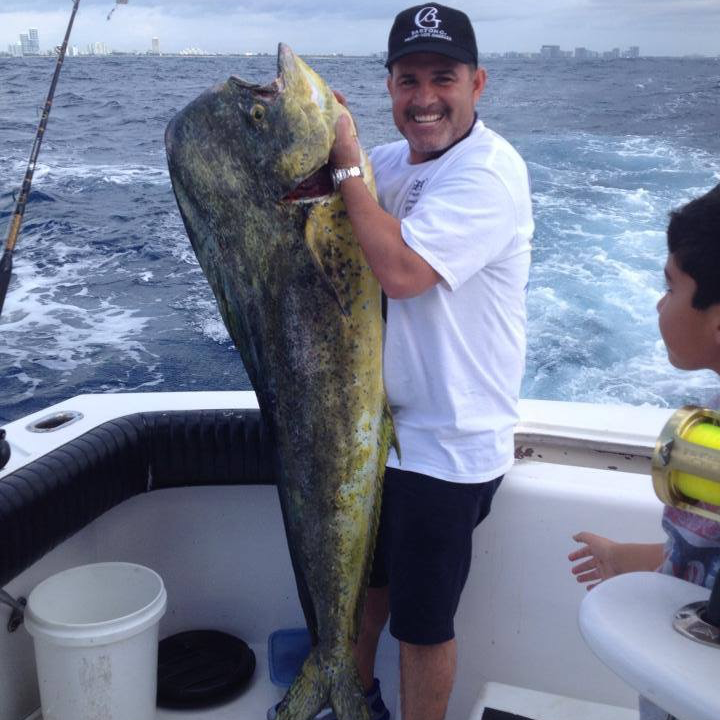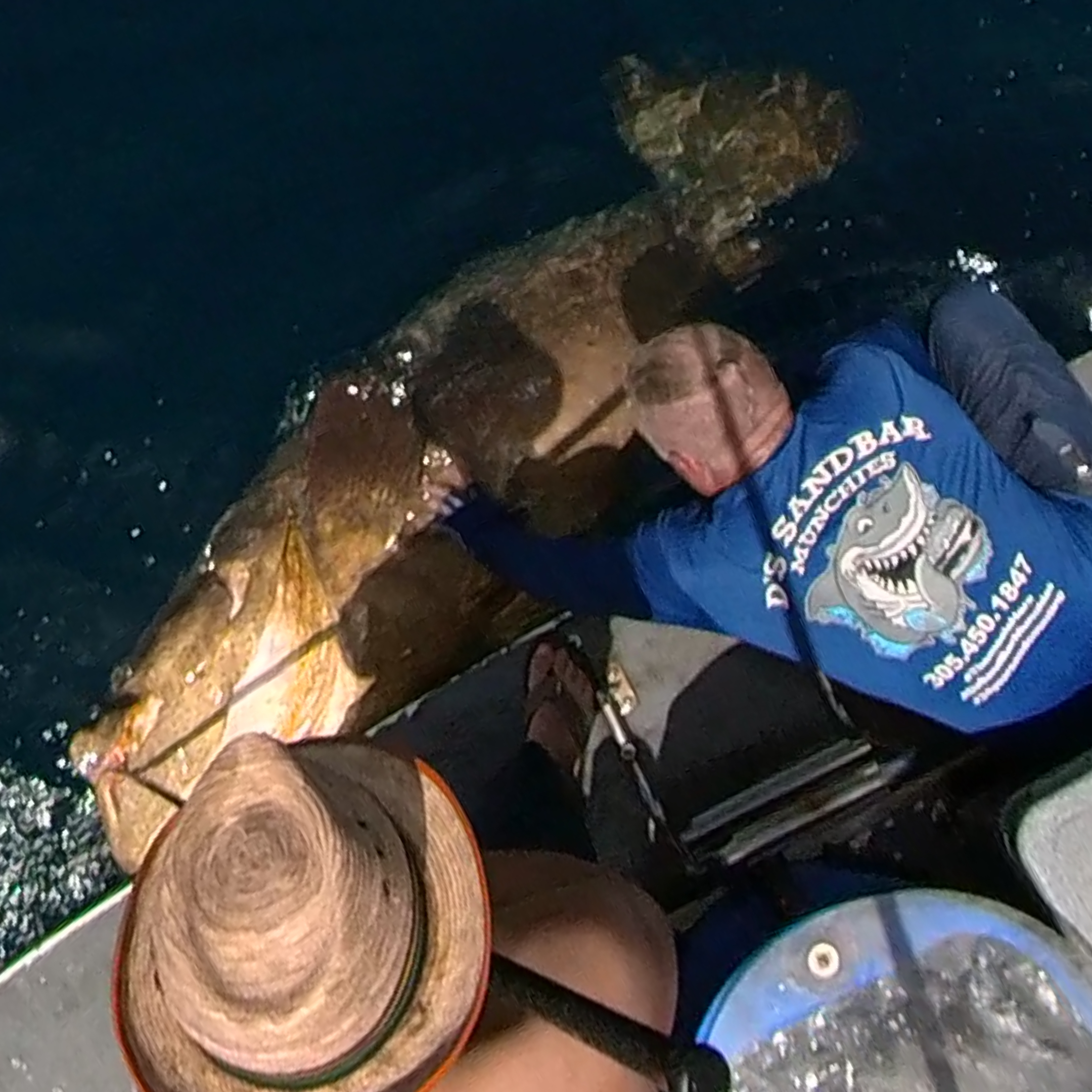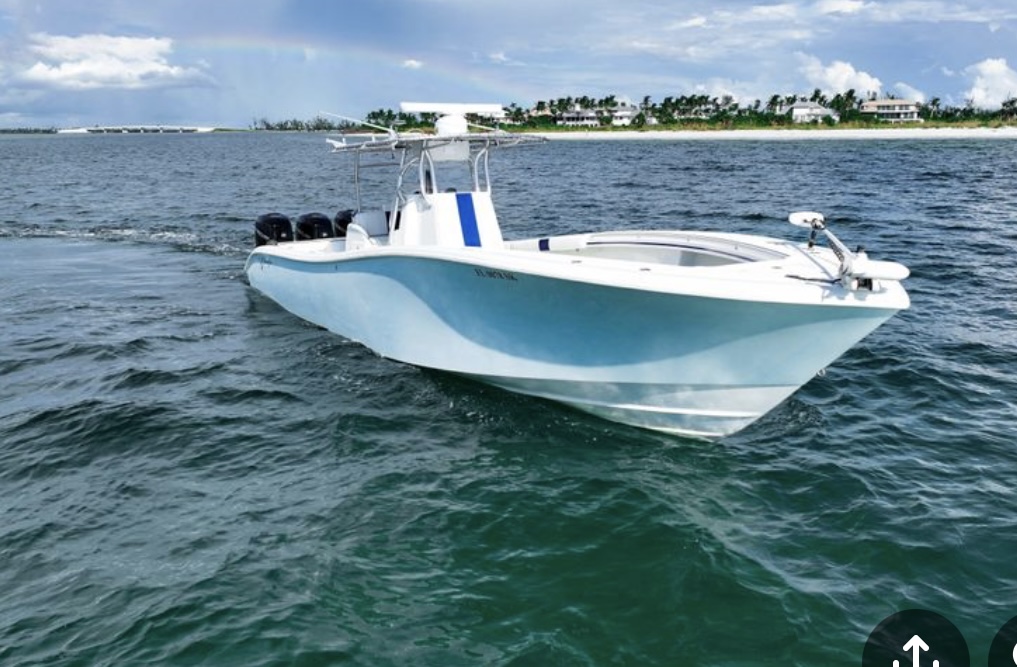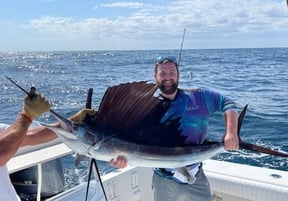VIP SPORTFISHING & OCEAN SKEET
Deep Sea, Nearshore Fishing in Key West
Key West 47 Ft Hatteras
Deep Sea Fishing in West Palm Beach
1/2 Day Fishing Trip
Inshore, Deep Sea, Nearshore in Fort Lauderdale
Fort Lauderdale Sportfishing
Sportfishing Key West
Deep Sea Fishing in Gulf Breeze
Offshore Fishing (FADs / Oil Rigs)
Deep Sea Fishing in West Palm Beach
Full & 3/4 Day Fishing Trips
8hr Offshore Big Game Trip
Deep Sea Fishing in Miami Beach
Full Day Off Shore Deep Sea Fishing
5hr Offshore Big Game Trip
We started Captain Experiences to make it easy to book fishing and hunting guides around the world. With over 2,000 Damn Good Guides, our platform makes finding and booking a trip seamless. Head here to check out our trips.
Fishing Slams
Anglers who love to challenge themselves will thoroughly enjoy fishing slams. Fishing slams are pretty straightforward, catch a certain number of fish in a set amount of time, in theory, it’s just that easy. When it comes to the slams themselves there are official IGFA Slams and unofficial slams that are more of a socially accepted achievement. To make it easier to sort through which challenges are most appealing for you, here is a breakdown of the most popular “slams.”
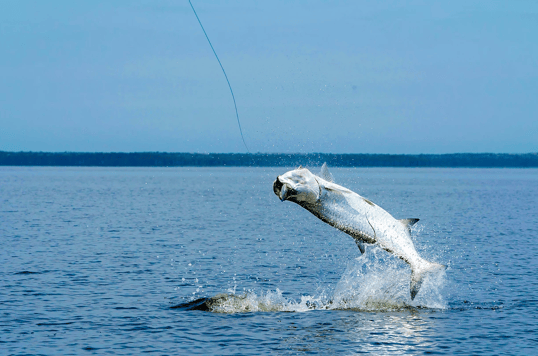
International Game Fish Association Slams
IGFA slams are pursued by category with each category containing fish with similar traits. The main goal is to catch three or more fish within a category in a single day. Catching three fish from the species list is a Grand Slam, four makes it a Super Grand Slam, and if you are lucky or skilled enough to catch five it’s a Fantasy Slam. All fish must be caught in a single day but photo video evidence will work and IGFA says they will honor previous catches. Pulling off any of these slams is impressive but let's dive in and take a look at the different options.
Bass Slam
The eligible fish for a bass slam are the Largemouth, smallmouth, spotted, shoal, rock, striped, white, and whiterock bass. The hardest fish to track down in this category are the shoal and rock bass because of their distribution. Shoal bass are only found in Florida and Georgia and their populations are decreasing due to competition with spotted bass for food resources. The rock bass is primarily found in east-central states where smallmouth bass are more common. Thankfully with only two of the eight species being hard to find, many states can produce a fantasy slam but the best chances will be in Georgia or Florida.
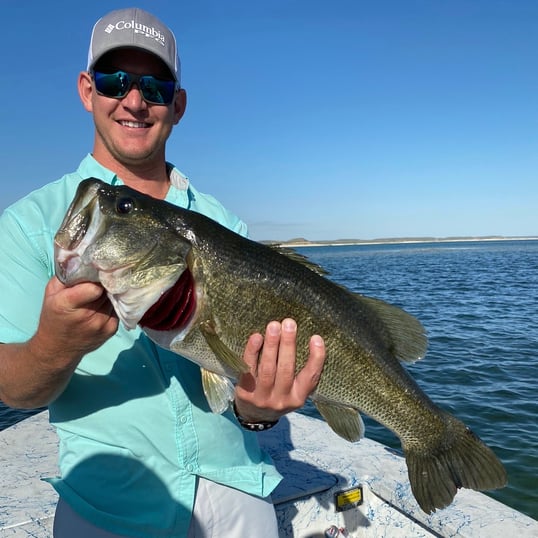
Billfish Slam
The Species in the billfish slam include the Atlantic blue marlin, Pacific blue marlin, black marlin, white marlin, striped marlin, Atlantic sailfish, Pacific sailfish, swordfish, and spearfish. The biggest factor in catching a billfish slam is that Pacific blue marlin, black marlin, striped marlin, and pacific sailfish only live in the Pacific Ocean while the Atlantic blue marlin, white marlin, and Atlantic sailfish only live in the Atlantic ocean. Swordfish can be found in both oceans and spearfish are usually caught in the Pacific but occasionally will be found in the Atlantic. This means that anglers attempting the billfish slam in the Pacific have six species while anglers in the Atlantic only have five. The billfish slam is particularly difficult because these fish feed in offshore waters which requires anglers to cover a lot of water. On top of that, none of these fish are easy to land due to their size and/or strength. The best places to attempt the billfish slam would be Hawaii or Florida due to their ease of access to prime pelagic feeding grounds.
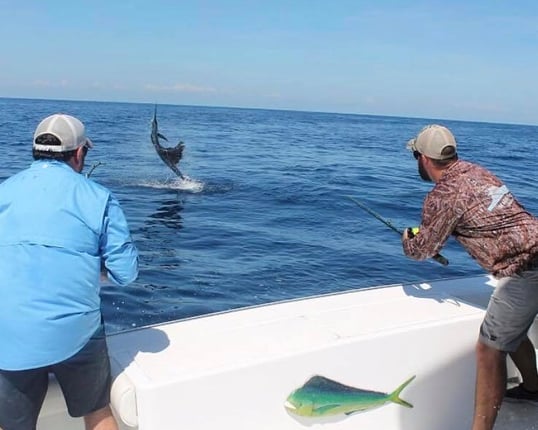
Inshore Slam
The IGFA Inshore Slam has the largest group of qualifying species with the Atlantic bonefish, Atlantic cubera snapper, Atlantic snook, tarpon, and permit in the Atlantic Ocean and Pacific snook, Pacific bonefish, Pacific cubera snapper, snubnose pompano, giant trevally, roosterfish, bluefin trevally, and milkfish in the Pacific Ocean. Once again the Pacific has the advantage with eight total species while the Atlantic has five. Although it may seem like the Pacific would be an easy choice these fish are spread out with different migrations from western Africa to Hawaii and Central America. Some of the best places to accomplish the inshore slam would be Hawaii, Cabo, and Africa in the Pacific but the Florida Keys or Bahamas are also strong contenders.
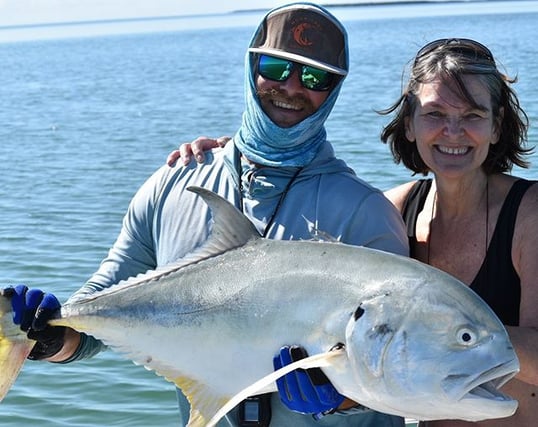
Tuna Slam
The tuna slam acknowledges bigeye, bluefin, longtail, skipjack, southern bluefin, dogtooth, yellowfin, and blackfin tuna for the slam. Because of the highly migratory nature of tuna they can be spread out around the world meaning that having a solid plan is crucial to attempting this slam. Places like Australia and Japan have the largest number of these tuna in the Pacific while the east coast of the United States will be a great pick for a tuna slam in the Atlantic.
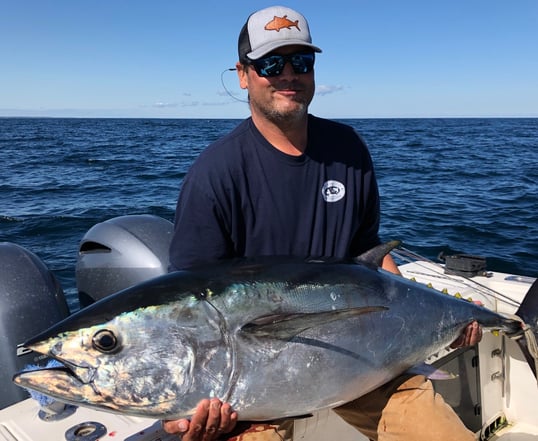
Offshore Slam
The offshore slam includes any of the fish listed in the billfish and tuna slams along with dolphinfish(mahi mahi) and wahoo. With one of the largest species pool of any slam, anglers can pull it off almost anywhere but that still doesn’t mean it’s easy. All of these pelagic species travel long distances and generally feed in open water so finding three of them in a day might be difficult. Beyond locating the fish, you have to be lucky enough to get a bite and skilled enough to get them on the boat. While it seems like an easily attainable slam, always remember that there are no guarantees in fishing.
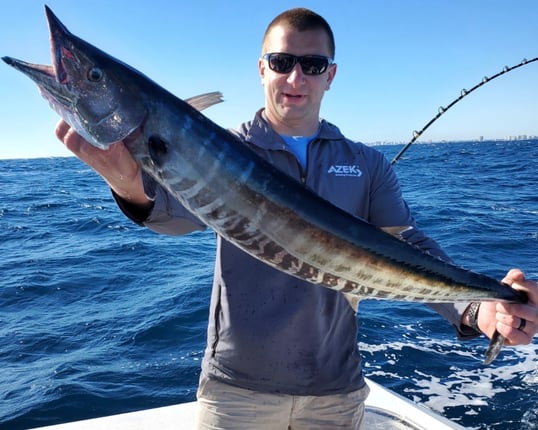
Shark Slam
Shark fishing is a specialty and has its own slam consisting of blacktip, blue, bull, hammerhead, mako, porbeagle, thresher, tiger, and tope sharks. Similar to many sportfish, sharks travel long distances so timing and location will be important for any angler hoping to catch three or more different species. There are some destinations such as Australia, New Zealand, the U.K., and the east and west coast of the United States which are better suited for a slam because of the abundance of sharks in the area.
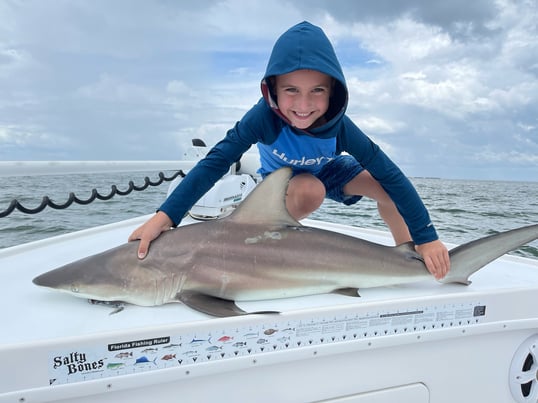
Salmon
The salmon slam is an exclusive slam consisting of Atlantic, chinook, sockeye, chum, pink, and coho salmon. The difficulty of completing a salmon slam comes from five of the salmon species living in the Pacific Ocean which means it's only possible to catch slam on the west coast of North America. This is one of the only categories where you have to catch all of the species in the pacific for a fantasy slam. The only regions that have confirmed salmon slams and are your best bet for completing a slam are Oregon, Alaska, and western Canada. With each species having slightly different spawning runs, timing a trip to these places will play a big role in which salmon you target for a slam.
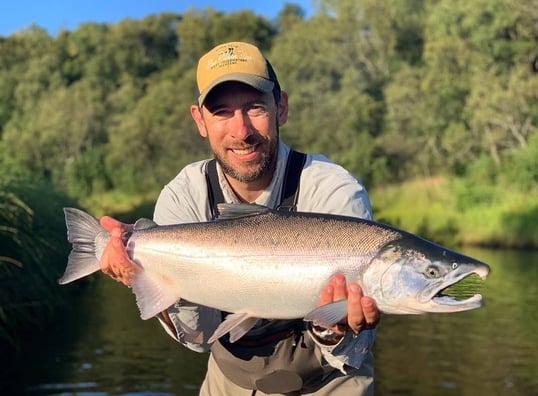
Trout Slam
The trout slam can be completed in a variety of states because brook, brown, cutthroat, lake, and rainbow trout have been introduced to bodies of water across the country. These five species are enough for a fantasy slam on their own but two more species also qualify for a slam. The golden and bull trout have relatively small ranges and are native to high altitude streams. The golden trout is primarily found in California but has been introduced to other secluded bodies of water in nearby states. The bull trout is only found in the Northwestern U.S. and into Canada. The best places to go for a trout slam are any bodies of water in the three major mountain ranges in the U.S. consisting of the Rocky, Sierra Nevada, and Appalachian Mountains.
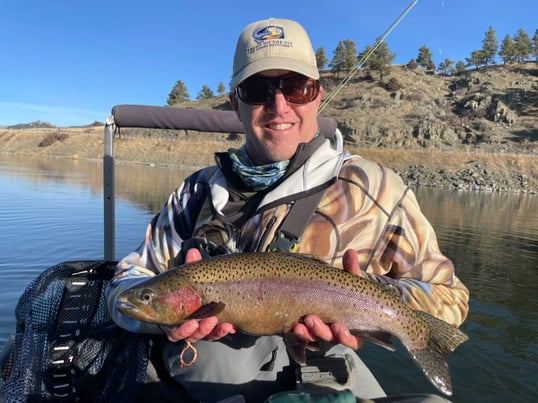
Other Slams
These slams are recognized by the Florida Fish and Wildlife Conservation Commission under their Catch a Florida Memory program. These achievements show an angler has exceptional skill and knowledge of fishing; however, these slams are not recognized or managed by a governing organization outside of Florida. Anglers outside of Florida waters use these slams to socially acknowledge the achievements of other anglers.
Inshore Slam
This inshore slam is accomplished when an angler catches a redfish, speckled sea trout, and flounder in a single outing. The best time to head to the coast to get an inshore slam is generally in the fall when the redfish and flounder are preparing for their spawns.
Nearshore Slam
The nearshore slam is catching a cobia, tripletail, and kingfish in a single day which can be had because these fish all have drastically different behaviors. The best time to attempt this slam in the gulf is from late spring into summer when all three species are at peak bite.
Blue Water Slam
A blue water slam consists of catching a sailfish, wahoo, and mahi mahi(dolphinfish) in a single day. These fish are known for feeding in open bluewater miles offshore and are capable of incredible fights. These fish are fast and travel long distances which is why they can be found across a vast range of open oceans.
Drum Slam
The drum slam is one of the most accessible and delicious slams consisting of redfish(red drum), black drum, and sheepshead. These fish are known for hanging out particularly close to shore and can all be caught in an afternoon using shrimp for bait. This is a slam that can be accomplished any time of year but the best seasons are late spring and late fall.
Pursuing Fish
There are more fishing slams than the ones we have already mentioned with anglers from various backgrounds pursuing a range of fish. Catching different species is great for picking up new skills but also gaining incredible experiences and we want to hear what species or slam you are chasing this year. If are chasing fish this year or have already been on a great trip, tell us about it by sending us an email at: [email protected].
Joey Butrus
Updated on June 22, 2023

June 22, 2022

October 26, 2020
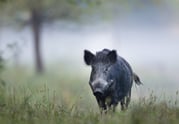
November 7, 2023

January 7, 2022

March 8, 2022
Related Articles
July 18, 2022
July 17, 2022
January 3, 2022
Featured Locations
- Fishing Charters Near Me
- Austin Fishing Guides
- Biloxi Fishing Charters
- Bradenton Fishing Charters
- Cabo San Lucas Fishing Charters
- Cancun Fishing Charters
- Cape Coral Fishing Charters
- Charleston Fishing Charters
- Clearwater Fishing Charters
- Corpus Christi Fishing Charters
- Crystal River Fishing Charters
- Dauphin Island Fishing Charters
- Daytona Beach Fishing Charters
- Destin Fishing Charters
- Fort Lauderdale Fishing Charters
- Fort Myers Fishing Charters
- Fort Walton Beach Fishing Charters
- Galveston Fishing Charters
- Gulf Shores Fishing Charters
- Hatteras Fishing Charters
- Hilton Head Fishing Charters
- Islamorada Fishing Charters
- Jacksonville Fishing Charters
- Jupiter Fishing Charters
- Key Largo Fishing Charters
- Key West Fishing Charters
- Kona Fishing Charters
- Lakeside Marblehead Fishing Charters
- Marathon Fishing Charters
- Marco Island Fishing Charters
- Miami Fishing Charters
- Montauk Fishing Charters
- Morehead City Fishing Charters
- Naples Fishing Charters
- New Orleans Fishing Charters
- New Smyrna Beach Fishing Charters
- Ocean City Fishing Charters
- Orange Beach Fishing Charters
- Panama City Beach Fishing Charters
- Pensacola Fishing Charters
- Pompano Beach Fishing Charters
- Port Aransas Fishing Charters
- Port Orange Fishing Charters
- Rockport Fishing Charters
- San Diego Fishing Charters
- San Juan Fishing Charters
- Sarasota Fishing Charters
- South Padre Island Fishing Charters
- St. Augustine Fishing Charters
- St. Petersburg Fishing Charters
- Tampa Fishing Charters
- Tarpon Springs Fishing Charters
- Venice Fishing Charters
- Virginia Beach Fishing Charters
- West Palm Beach Fishing Charters
- Wilmington Fishing Charters
- Wrightsville Beach Fishing Charters
